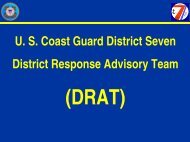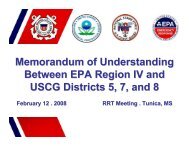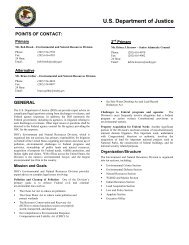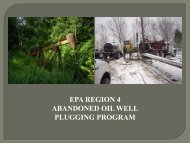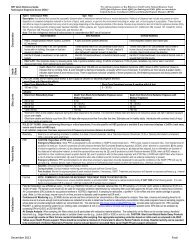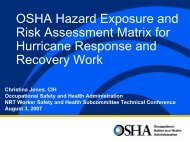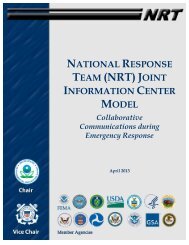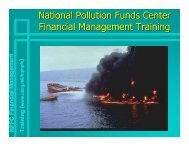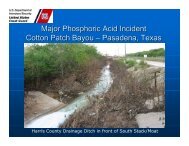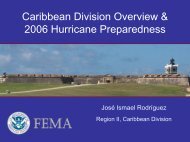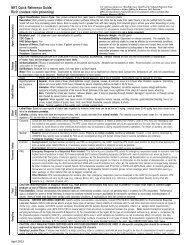USE OF DISPERSANTS - U.S. National Response Team (NRT)
USE OF DISPERSANTS - U.S. National Response Team (NRT)
USE OF DISPERSANTS - U.S. National Response Team (NRT)
- No tags were found...
Create successful ePaper yourself
Turn your PDF publications into a flip-book with our unique Google optimized e-Paper software.
minimize substantial threat to public health or welfare, or serious environmental damage.404.5 Dispersants or chemical agents may be used in open waters that are at least one mile fromany shoreline or at least one mile from any reef which is less than 20 feet from the water'ssurface. in all cases where dispersants or chemical agents are used, the water depth in theapplication area must be greater than 60 feet deep.404.6 Dispersants or chemical agents shall not be used in, on, or over waters containing reefs;waters designated as marine reserves; ma grove areas; or waters in coastal wetlands;except with the prior and express concurrence of DPNR and <strong>USE</strong>PA, in consultation withUSDOC and USDOI. Coastal wetlands include:1) Submerged algal beds (rocky or unconsolidated bottom);2) Submerged seagrass beds; and,3) Coral reefs.404.7 Dispersants or chemical agents shall not be used in fresh or brackish waters.404.8 As a general rule, if a discharge is too small to be removed by alternative mechanicalmethods, it is too small to consider the application of dispersants or chemical agents.404.9 Sinking agents are not dispersants and shall not be considered as authorized chemicalagents. Use of sinking agents is expressly prohibited by this Agreement and the <strong>National</strong>Contingency Plan.404.10 If an oil discharge poses an imminent threat to a sensitive area restricted by protocol404.5, the USCG OSC must contact <strong>USE</strong>PA and DPNR for concurrence, and will consultwith USDOI and USDOC. If <strong>USE</strong>PA and DPNR disagree, the opinion of DPNR shallprevail. If DPNR provides no answer within 4 hours, <strong>USE</strong>PA's decision will prevail. Inthe event that neither DPNR nor <strong>USE</strong>PA can provide an answer within 4 hours, theUSCG OSC may proceed with the dispersant or chemical agent application if the threatrepresents a substantial threat to public health or welfare, or serious environmentaldamage is imminent if dispersants or chemical agents are not used.404.11 Any use of dispersants or chemical agents requires that a post incident debriefing takeplace within 45 days after the first application of dispersants or chemical agents. Thedebriefing will gather information concerning the effectiveness of the dispersant orchemical agent used, the effectiveness of the application program at preventingenvironmental damage, and whether any changes or modifications to this Agreement arenecessary. The debriefing will be chaired by DPNR and shall include the incidentspecific Regional <strong>Response</strong> <strong>Team</strong> (RRT). The results of the debrief will be included inthe OSC Report.405. The USCG OSC shall make every effort to continuously evaluate the decision to use dispersantsor chemical agents by considering the advice of the <strong>USE</strong>PA, USDOI, USDOC, DPNR, the other membersof the Caribbean Regional <strong>Response</strong> <strong>Team</strong>, and any other agencies, groups, or information sources whichmay be available500. AMENDMENTS



